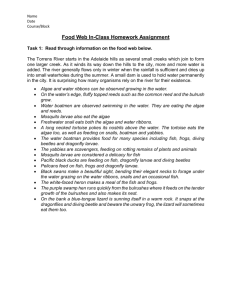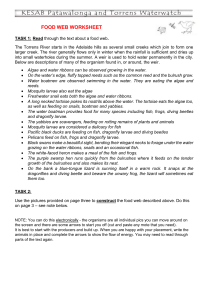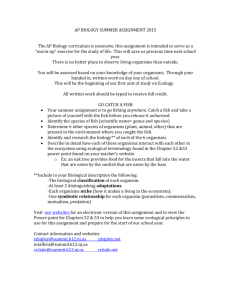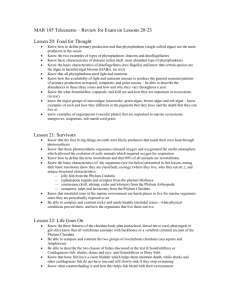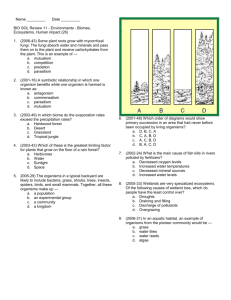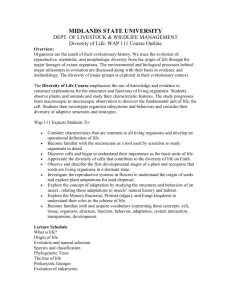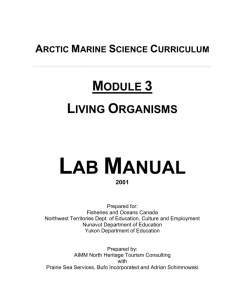Wetlands Food Web Lab
advertisement
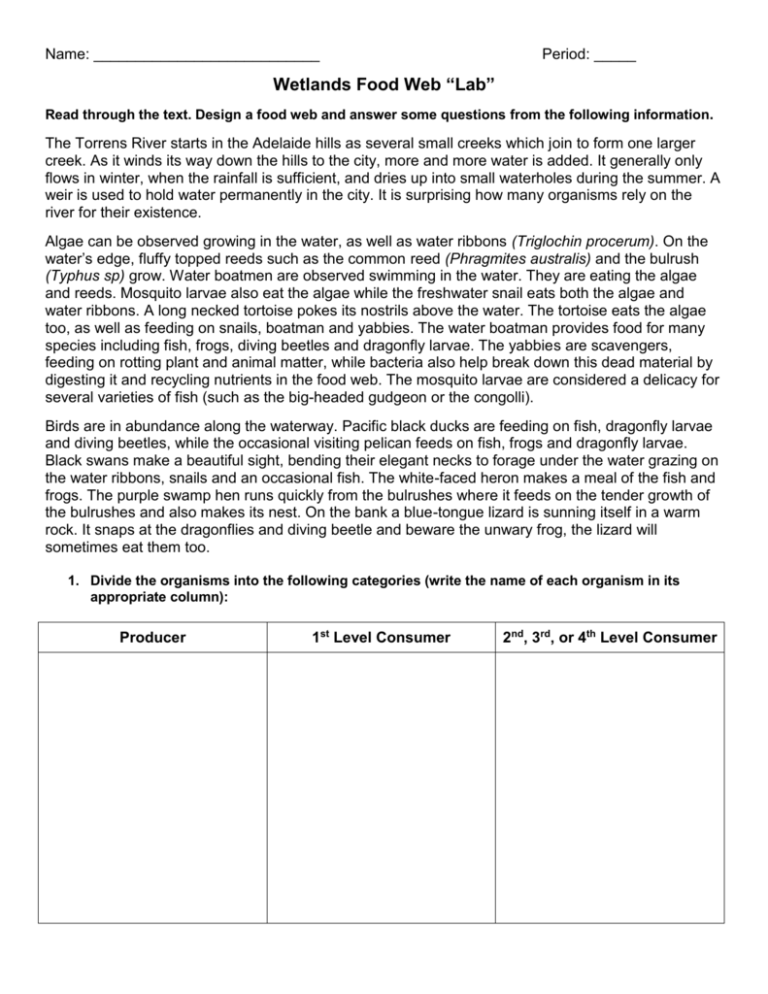
Name: ___________________________ Period: _____ Wetlands Food Web “Lab” Read through the text. Design a food web and answer some questions from the following information. The Torrens River starts in the Adelaide hills as several small creeks which join to form one larger creek. As it winds its way down the hills to the city, more and more water is added. It generally only flows in winter, when the rainfall is sufficient, and dries up into small waterholes during the summer. A weir is used to hold water permanently in the city. It is surprising how many organisms rely on the river for their existence. Algae can be observed growing in the water, as well as water ribbons (Triglochin procerum). On the water’s edge, fluffy topped reeds such as the common reed (Phragmites australis) and the bulrush (Typhus sp) grow. Water boatmen are observed swimming in the water. They are eating the algae and reeds. Mosquito larvae also eat the algae while the freshwater snail eats both the algae and water ribbons. A long necked tortoise pokes its nostrils above the water. The tortoise eats the algae too, as well as feeding on snails, boatman and yabbies. The water boatman provides food for many species including fish, frogs, diving beetles and dragonfly larvae. The yabbies are scavengers, feeding on rotting plant and animal matter, while bacteria also help break down this dead material by digesting it and recycling nutrients in the food web. The mosquito larvae are considered a delicacy for several varieties of fish (such as the big-headed gudgeon or the congolli). Birds are in abundance along the waterway. Pacific black ducks are feeding on fish, dragonfly larvae and diving beetles, while the occasional visiting pelican feeds on fish, frogs and dragonfly larvae. Black swans make a beautiful sight, bending their elegant necks to forage under the water grazing on the water ribbons, snails and an occasional fish. The white-faced heron makes a meal of the fish and frogs. The purple swamp hen runs quickly from the bulrushes where it feeds on the tender growth of the bulrushes and also makes its nest. On the bank a blue-tongue lizard is sunning itself in a warm rock. It snaps at the dragonflies and diving beetle and beware the unwary frog, the lizard will sometimes eat them too. 1. Divide the organisms into the following categories (write the name of each organism in its appropriate column): Producer 1st Level Consumer 2nd, 3rd, or 4th Level Consumer 2. Use the pictures provided to construct a food web. Cut them out and arrange them with producers at the bottom, 1st level consumers above them, and 2nd level and higher consumers above them. Be sure you have arrows between organisms and that they show the correct transfer of energy! 3. Use your food web to complete the following questions. 1. Which of the organisms contain chlorophyll (a pigment that absorbs solar energy)? Are they producers or consumers? How do you know? 2. Which organisms feed on algae?________________________________________________ 3. Which organisms feed on fish?_________________________________________________ 4. Find a food chain from your web with at least 4 organisms. Place them in the pyramid with the producer at the bottom and the highest order consumer at the peak. Why do you think that ecosystem food webs and chains can be categorized as a pyramid? What is significant about the role of the producers in all ecosystems? 5. Which organisms are decomposers? Where do they live? What do they do? Indicate where they fit in your food web. 6. Predict (using your food web) what would happen to the organisms if: a) an oil spill occurred nearby. b) all the fish were killed. c) several homeowners nearby fertilized their lawns followed by a big rain. d) the weather is warmer than usual and less rain falls.
